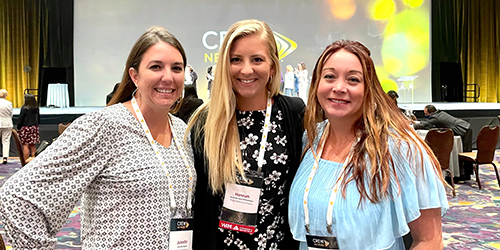Published On Aug 20, 2020
in Leadership & Development
In some ways, it feels like yesterday that we were shopping, dining and interacting with friends, family and coworkers without a thought to social distancing or face coverings. Yet, in other ways, it seems as if COVID-19 has been here forever and many are getting restless and frustrated. These conflicting emotions and peoples’ extremely varied reactions to the pandemic can make managing and leading a team challenging. How do leaders effectively address the different situations and needs of their teams, respond to the emotional toll a crisis can take on associates and still continue to achieve results? As General Counsel and SVP of Phillips Edison & Company, leading a 23-person legal team, as well as several cross-functional teams, I’ve learned that it’s all about communication and perspective.
When the pandemic first began and our neighbors (PECO’s word for our tenants) began to close their doors due to stay-at-home orders and other mandates, the PECO team also moved to a remote work situation. While we have access to a variety of tools to facilitate virtual communication and collaboration, I noticed that the rapidly changing and stressful situation was creating a disconnect with team members trying to balance increased workloads with new working environments. To address this, I pulled together a cross functional team dedicated to helping the company and our neighbors navigate the crisis. We met daily to discuss issues and concerns, brainstorm creative solutions and establish implementation plans that aligned the teams and helped them better channel their energies.
Daily, structured communication was vital to Phillips Edison’s ability to manage through the early days of the pandemic and it continues to be essential to our team efforts. In addition to the crisis team, I also established increased regular communications with my team and the associates I mentor across the company. Challenges can be greatly alleviated with intentional and strategic outreach that encourages team members to not only share information, but work together to solve problems, including those related to workload and the emotional impact of a pandemic or other crisis.
This is where communication meets perspective. Leaders who are truly interested in maintaining a cohesive and results-oriented team recognize that we do not operate in a bubble. In times of crisis our team members are impacted not just professionally, but personally as well. As leaders, we have a unique opportunity to help associates work through these concerns, by lending an ear, brainstorming solutions, providing resources and offering advice. We can be flexible, assign work appropriately and help our teams see opportunity despite the difficulty. We can also help the team see past the immediate issues and look to the bigger picture.
Many of our younger associates were not in the workforce during the last recession and in my conversations with these individuals, I’ve advised them to learn all that they can during this time. They will probably never again have the opportunity to learn as much about as many different parts of the business as they do now. This perspective has helped them to step away from the panic and move into action.
Nobody knows how long COVID-19 will continue to impact our lives and businesses. As leaders, we can help our teams – and our companies – through the crisis by ensuring enhanced, intentional and consistent communication and providing perspective. We are all a team committed to the same goals. We will work together and emerge stronger. The days may seem long but pass by all too quickly. Effective leadership during a crisis will help your team move past the panic, collaborate to overcome the overload, see the opportunity – and seize it.
Tanya Brady





